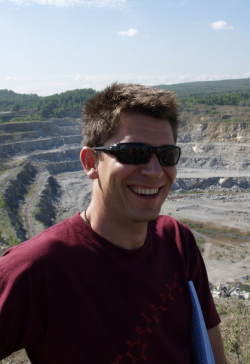Tag: Christian Klug

Christian Klug (curator of the Palaeontological Museum of the University of Zurich, Switzerland) grew up in southern Germany. Already at the age of 10, he became interested in nature, particularly botany and geology. Some years later, he began collecting Triassic fossils in the area around his hometown Schwaebisch Hall (Germany). After school, he studied palaeontology in Tuebingen. Both his MSc- and his PhD-thesis focused on Devonian ammonoids based on materials from Morocco. After a scientific internship at the Staatliches Museum fuer Naturkunde in Stuttgart (Germany), he received a part time position as research associate at the Palaeontological Institute and Museum of the University of Zurich. Since 2014, he has been a curator of the museum. In his research, he focuses on the palaeobiology of cephalopods and their macroecological changes in the Palaeozoic.
Contact Details:
Paläontologisches Institut und Museum, Zürich, Switzerland.